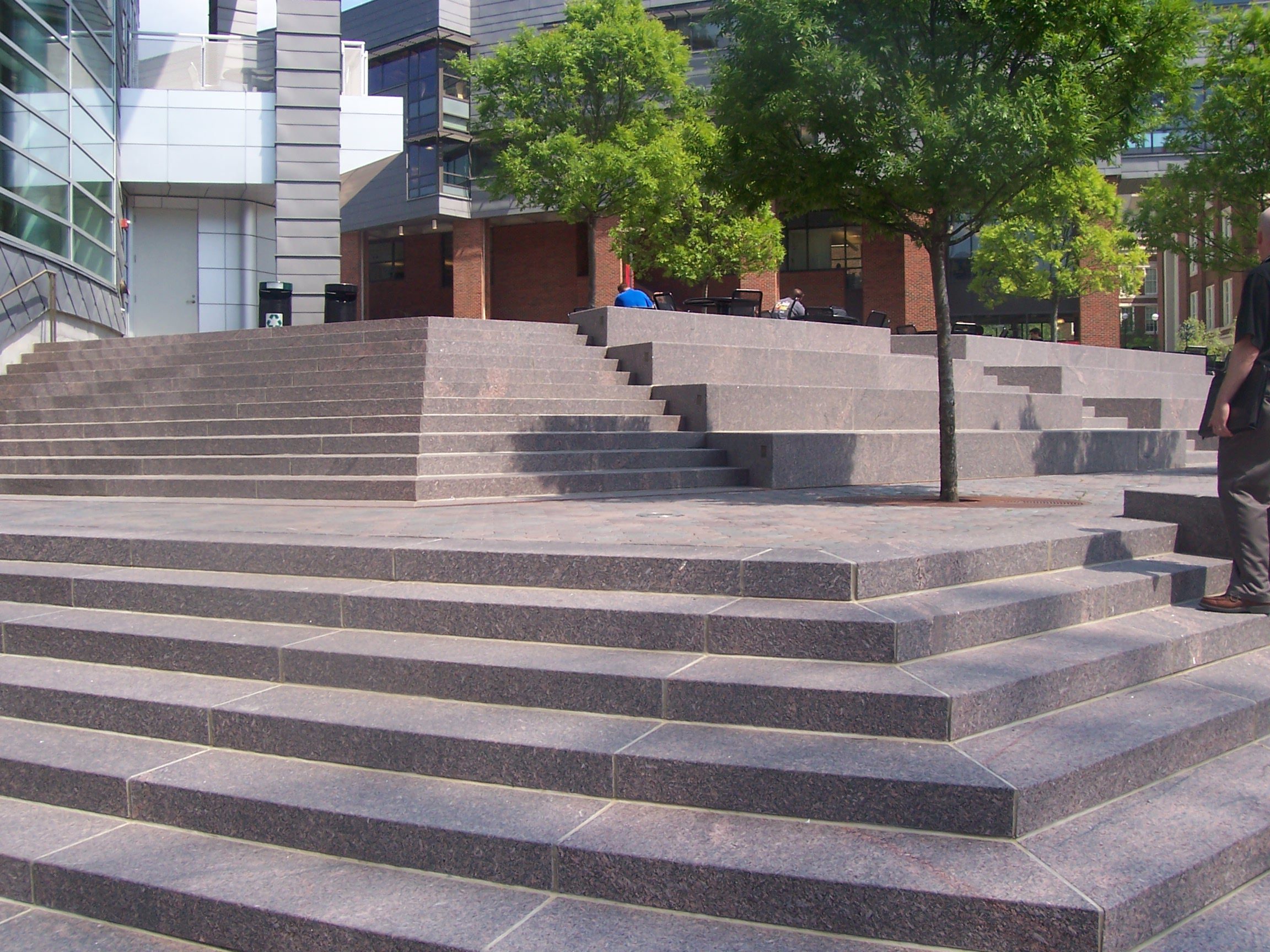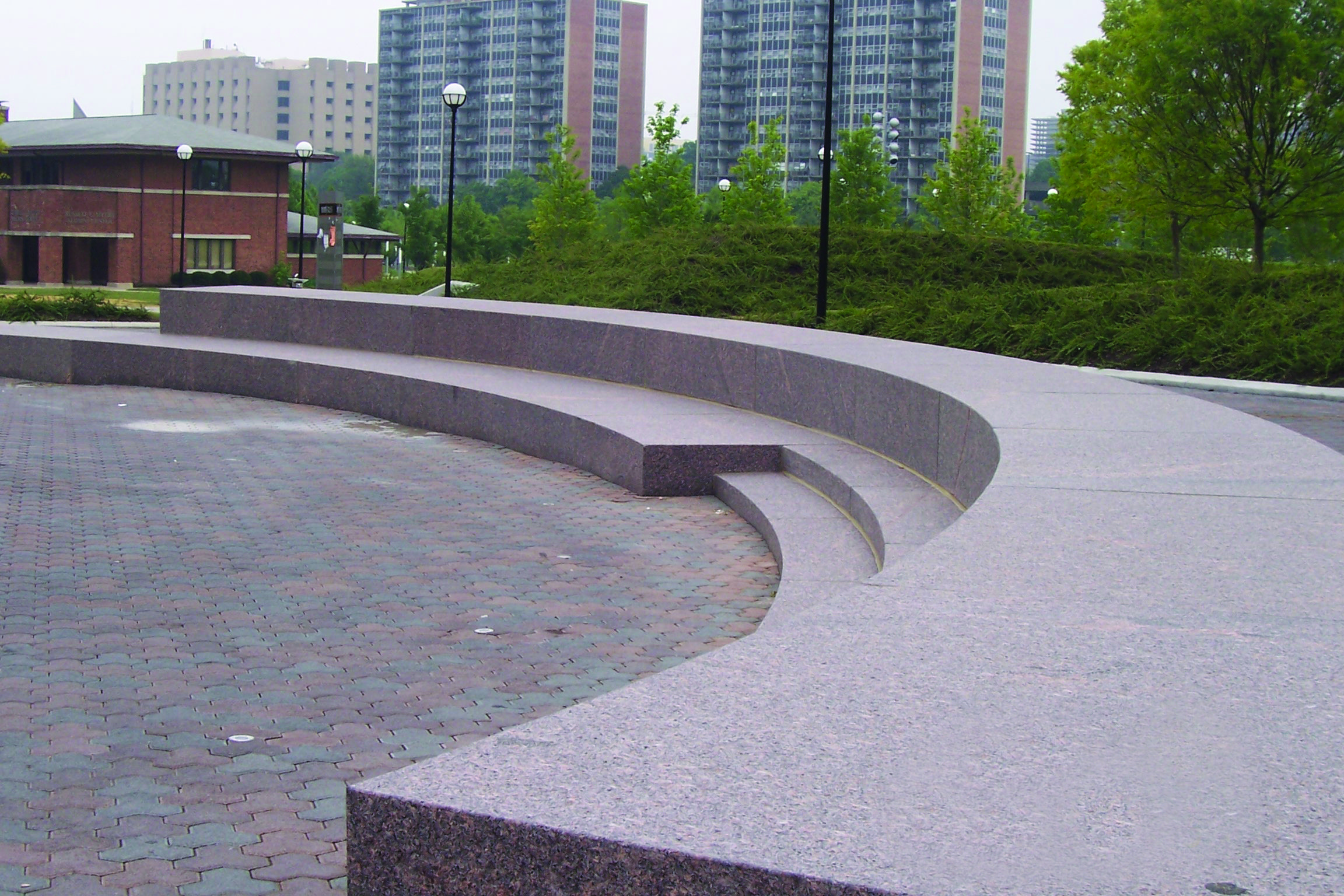University of Cincinnati
University of Cincinnati
Like many college campuses, the University of Cincinnati keeps a constant eye on improvement. Ensuring buildings and campus structures are modern, convenient and attractive plays an important role in drawing new students each year. When the University of Cincinnati, which had made a significant investment in granite over the years, initiated a renovation plan for Nippert Stadium and its surrounding hardscape, big questions came to mind. Can the existing granite be re-used and reworked? If so, how much is re-usable? How much new granite will be required? Will new granite match the existing granite? As the university found out, granite is one of the most versatile building materials on the market – especially when renovations enter the plan.
Expanded Stadium, Increased Options
The University of Cincinnati initiated an extensive master plan in the 1990s with a commitment to modern architecture and design. In the last 20 years, 50 percent of the campus has been modified, with granite as a principal ingredient in the improvement projects.
“The University of Cincinnati has a commitment to granite as a building material,” says Leonard Thomas, project manager at the University of Cincinnati. “To use anything other than granite for our upgrade projects would have been out of the question.”
Historic Nippert Stadium is the fifth oldest in college football, and renovations began at the conclusion of the 2013 football season. According to the university, one important goal for the project was to create a gameday atmosphere reflecting the university’s commitment to excellence in the built environment. Garnering interest in the football program with upgrades and a 10-percent increase in seating capacity was another important consideration. Throughout the project, maintaining schedule was critical so football games wouldn’t have to relocate for the 2015 season.

Completed in August 2015 in time for the season opener, the $86-million renovation to Nippert Stadium expanded its seating capacity from 35,000 to nearly 40,000 seats. Other features include a new press box structure, modifications to the stadium’s east and west concourse areas, a doubling of the existing concession and bathroom structures, and a reconfiguration of disability access and seating capabilities for the disabled. Premium seating was added on the stadium’s west side, with additional suites, club seats and loge boxes.
The Reconfiguration
Outside the stadium, extensive renovations to the hardscape were planned. To accommodate the stadium’s expanded northwest concourse for additional concession stands and bathrooms, a reconfiguration of the existing Bearcat Plaza was required. Bearcat Plaza contained numerous Carnelian® granite seatwalls from Coldspring measuring 6 feet long by 22 inches high by 30 inches deep. Carnelian, a red- and gray-hued granite, has been the university’s standard granite over the years. The tones coordinate with the paving, colors of buildings and the bronze railings. Over the years, Carnelian has been used on seats, steps and seatwalls across campus.
At Bearcat Plaza, the original Carnelian granite seatwalls served as retaining structures for the rolling topographical changes at the site and also as an amphitheater area for student gatherings or organized campus events. The design team wanted to re-use the existing granite as a transitional element of seats and steps in a new location between the stadium’s northwest concourse and the top of the Bearcat Plaza. To determine the feasibility of such an undertaking, the design team coordinated with the granite supplier, Coldspring.


The outcome would prove successful, requiring careful coordination and 426 square feet of new Carnelian stone in Diamond® 10 finish. Because the supplier and fabricator is also owner of the quarries, an abundance of material was certain. As such, quarry limitations and consistency of new stones to old stones were not of concern.
The existing granite steps and cubic benches at Bearcat Plaza were removed, marked and cataloged for re-use position, and then stored off site. New Carnelian granite in Diamond® 10 finish, to match the original seatwalls, was cut as needed. The original seatwalls were replaced in partial. Seatwalls that were not used were put in storage for future campus projects.
Conclusion
At Nippert Stadium, the re-use of granite has a network of connection points between buildings and spaces. It’s a new part of the game day experience, where fans can gather before and after games. The design team at the University of Cincinnati remains confident their investment in granite will last throughout any future renovations.
“Durability is the end result of using granite,” says Thomas. “Over years of wear and use, we’ve only noticed subtle variances in the patina of the seatwalls. In the overall scheme, the variances are unnoticeable.”
In 2011, Forbes magazine named University of Cincinnati one of the most beautiful campuses in America. The university’s commitment to improvements has transformed the campus into a modern, urban institution. The recent upgrades at Nippert Stadium ensure the campus will remain attractive for many years to come.
To discover more about the kinds of creations Coldspring has made with our materials, reach out to us today.